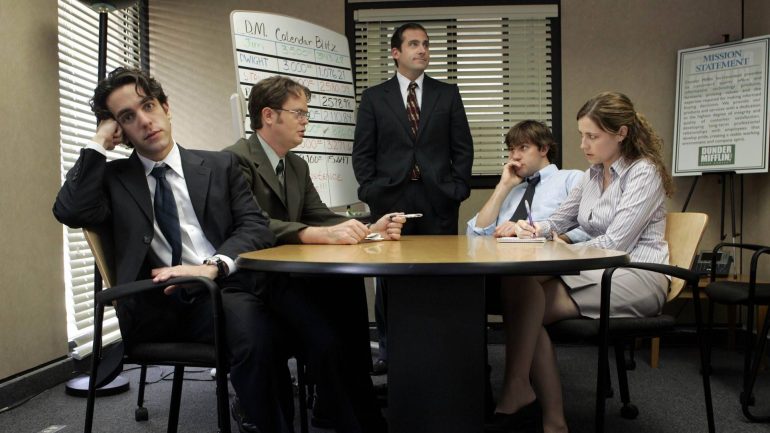As an entrepreneur, I’ve built and run several different types of businesses over the last few decades. Throughout it all, I’ve learned one important lesson when it comes to customers: sometimes, it’s simply better for business to get rid of the bad ones.
Sure, when your business is just getting off the ground it’s a different story. In the early stages of growth, you desperately need revenue and proof of product. You’re going to have to lower your prices to get business. And you’ll probably have to take on some difficult customers — ones that require a lot of extra time — when you’re just starting out.
But eventually, you’ve got to ditch them. I know this sounds a little crazy. Why would you want to drive away your own clients? Well, there are lots of reasons, actually. Some may be major headaches who completely sap the joy out of doing business. Others may demand time and attention that far exceed the revenue they’re bringing in. Still others may be so high-maintenance that they keep you from pursuing new opportunities or focusing on growing your company.
Entrepreneurs tend to have a fierce loyalty to the customers they’ve worked so hard to procure.
Entrepreneurs tend to have a fierce loyalty to the customers they’ve worked so hard to procure. But the bottom line is that some of these customers represent a serious business liability, not an asset. And these “problem clients” are ideal candidates for getting rid of.
This wasn’t a realization I arrived at easily. Back in the early 2000s, I founded a digital marketing agency (that would go on to create my current company Hootsuite) during the worst days of the tech bust. Forget about finding investors: even lining up customers was a challenge back then. So during my first few years of business there was plenty of low-balling. I took on whatever web projects came my way — often conceding to some seriously discounted prices — just to keep the lights on and pay my staff. I got used to working on razor thin margins for clients who demanded the world.
But, with time, the business climate shifted. The economy righted itself, tech recovered and companies had money to spend on software and services again. Not to mention, my own agency found its sweet spot and developed a reputation for top-notch work — innovative marketing apps and tools for the social media era. We began charging more reasonable rates and found that clients were willing to pay.
There was just one problem. We were still serving a huge roster of companies that had bent us over a barrel and signed contracts at ultra-low rates. So rather than pursuing new, more profitable and rewarding business, our team was instead bogged down tending to a packed lineup of customers who constantly demanded more for less. It was demoralizing. It didn’t make business sense. And something had to give.
So what do you do in that situation? Challenges aside, I didn’t want to create the impression that I didn’t value these customers or would refuse their business. Dropping them altogether wouldn’t have made sense. Ultimately, I realized the key was to charge them exactly what it would take to compensate my team for the time and energy spent dealing with them.
I did lose customers, but this freed up my team to focus on bigger and better projects.
For the most challenging customers, this amount factored in not only hours spent but, in essence, compensation for pain and suffering. We were perfectly willing to accommodate difficult clients, provided they paid their fair share. I wasn’t about to throw away business. But for the most trying customers, a significant premium had to be paid to make it worth our while.
The result? Well, I did lose customers (a surprising amount, however, did stick around). But this freed up my team to focus on bigger and better projects. Instead of spending hours on high-maintenance, low-revenue clients, we could set our sights on more ambitious targets. In fact, it was around this time that I put seven employees to work on an especially promising project: a new tool to manage all your social networks from one site. If not for killing off some high-maintenance, low-paying customers, it’s quite possible my most successful venture to date, Hootsuite, would never have gotten out of beta.
On the flipside, loyalty to customers is an absolutely crucial part of building any successful business. It’s no secret that the best companies in the world do well because they go to great lengths to keep their customers happy. Amazon has built an empire on sterling customer service, generous return policies and lightning-fast delivery. Customers are a company’s lifeblood and treating them right has been critical to building Hootsuite as well. We’re the most widely used social media management tool in the world because our 12-million-plus users know they can tweet us and get a response typically within 30 minutes.
But the point here is that there are simply some customers who aren’t worth all the effort. Ironically, it often tends to be the clients who pay the least who demand the most, expecting white-glove service for fast-food prices. I was drowning in these customers initially — until I discovered that by charging them accordingly and being willing to let them go, I was able to make room for those who were better for my business … and the bottom line.
This article was syndicated with permission from Ryan Holmes’ Medium account.


